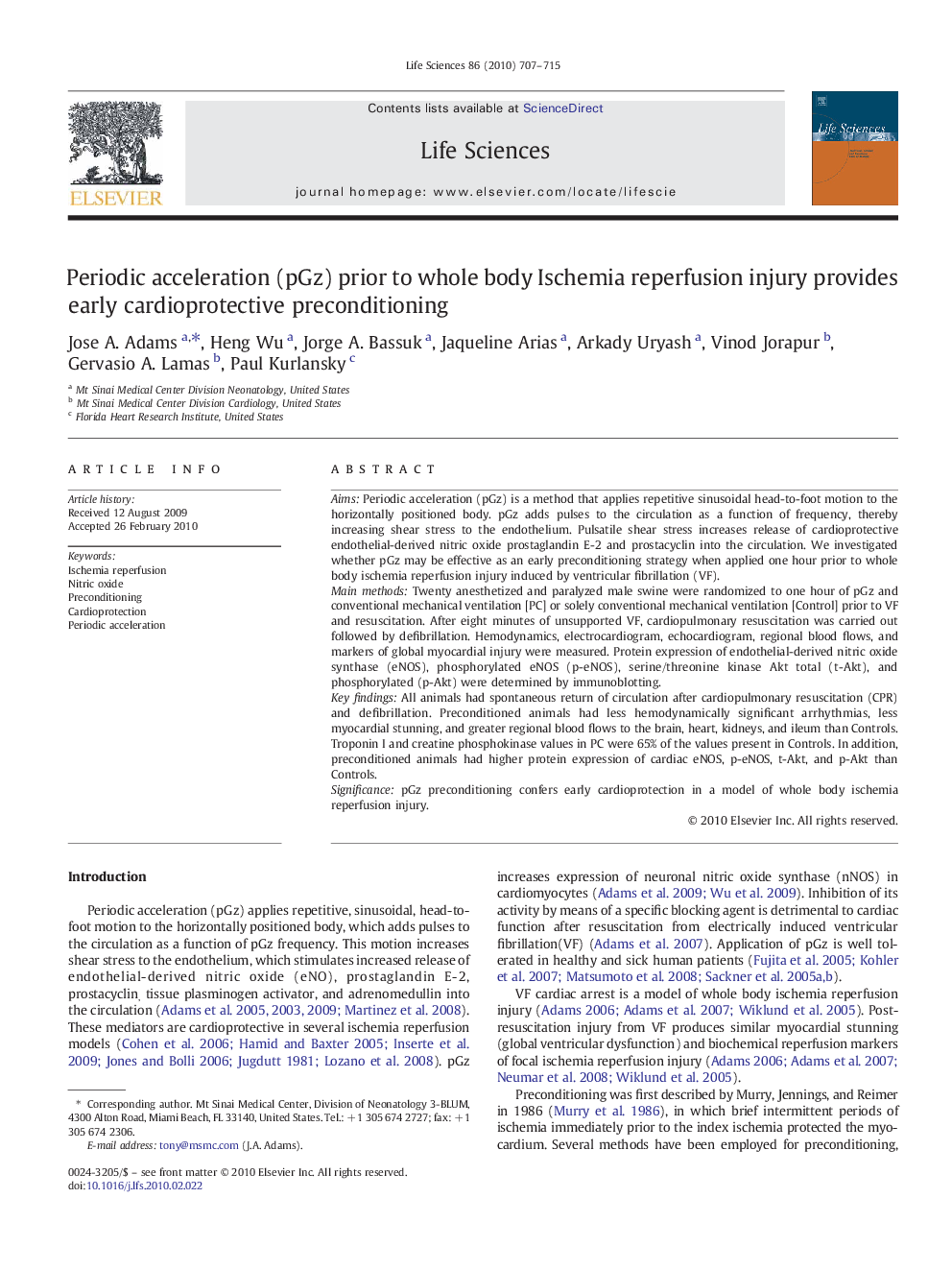| Article ID | Journal | Published Year | Pages | File Type |
|---|---|---|---|---|
| 2552060 | Life Sciences | 2010 | 9 Pages |
AimsPeriodic acceleration (pGz) is a method that applies repetitive sinusoidal head-to-foot motion to the horizontally positioned body. pGz adds pulses to the circulation as a function of frequency, thereby increasing shear stress to the endothelium. Pulsatile shear stress increases release of cardioprotective endothelial-derived nitric oxide prostaglandin E-2 and prostacyclin into the circulation. We investigated whether pGz may be effective as an early preconditioning strategy when applied one hour prior to whole body ischemia reperfusion injury induced by ventricular fibrillation (VF).Main methodsTwenty anesthetized and paralyzed male swine were randomized to one hour of pGz and conventional mechanical ventilation [PC] or solely conventional mechanical ventilation [Control] prior to VF and resuscitation. After eight minutes of unsupported VF, cardiopulmonary resuscitation was carried out followed by defibrillation. Hemodynamics, electrocardiogram, echocardiogram, regional blood flows, and markers of global myocardial injury were measured. Protein expression of endothelial-derived nitric oxide synthase (eNOS), phosphorylated eNOS (p-eNOS), serine/threonine kinase Akt total (t-Akt), and phosphorylated (p-Akt) were determined by immunoblotting.Key findingsAll animals had spontaneous return of circulation after cardiopulmonary resuscitation (CPR) and defibrillation. Preconditioned animals had less hemodynamically significant arrhythmias, less myocardial stunning, and greater regional blood flows to the brain, heart, kidneys, and ileum than Controls. Troponin I and creatine phosphokinase values in PC were 65% of the values present in Controls. In addition, preconditioned animals had higher protein expression of cardiac eNOS, p-eNOS, t-Akt, and p-Akt than Controls.SignificancepGz preconditioning confers early cardioprotection in a model of whole body ischemia reperfusion injury.
